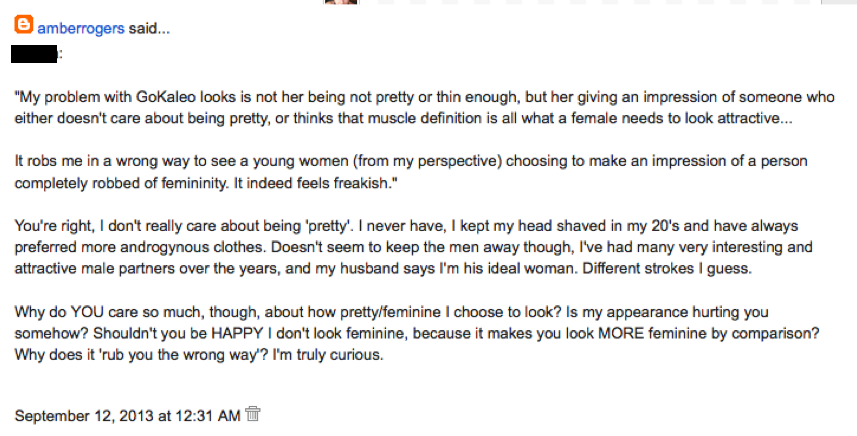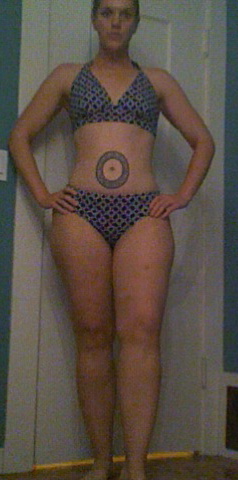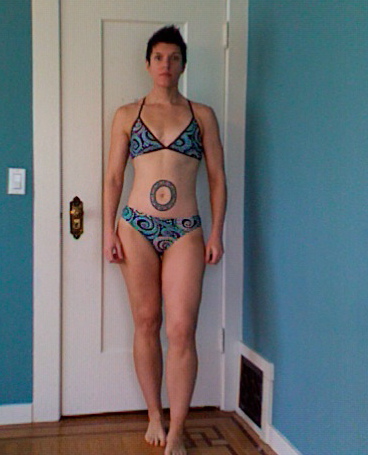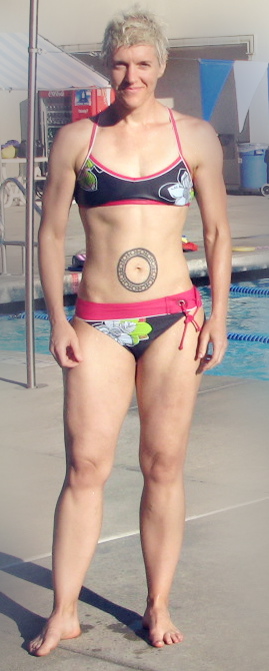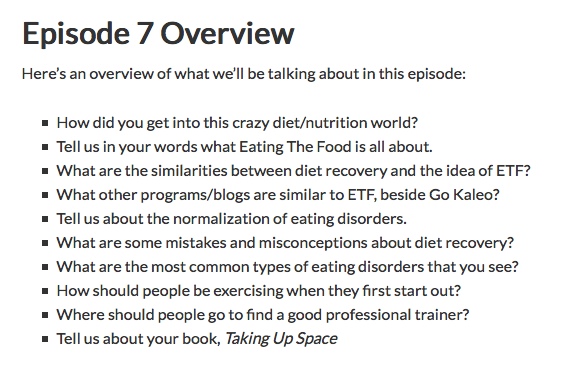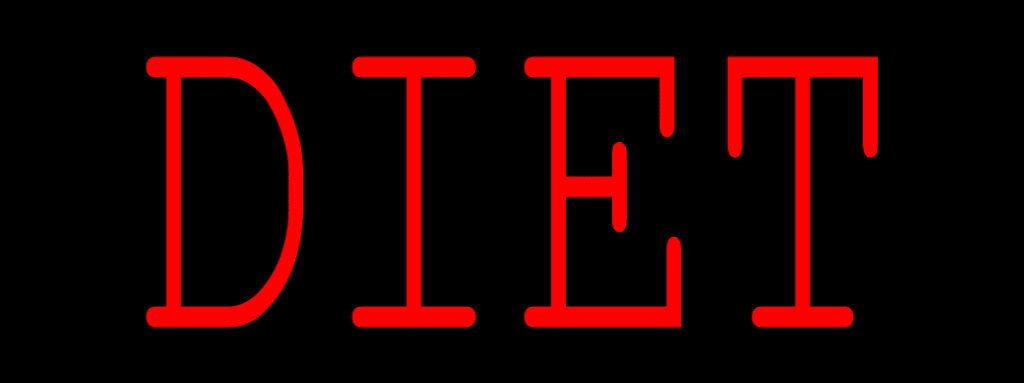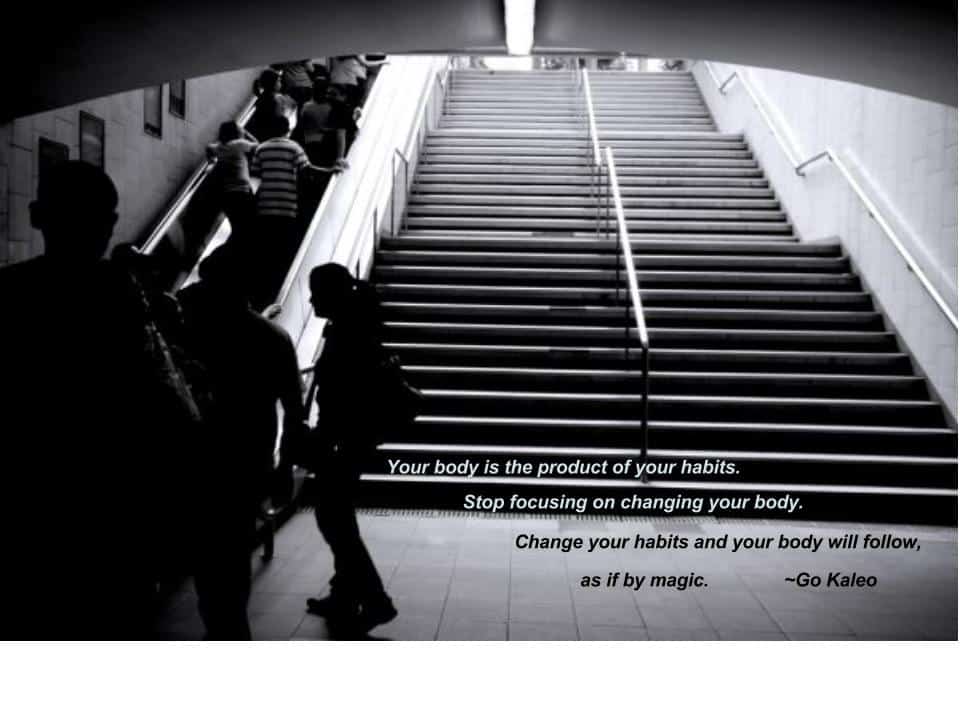 Most diet programs involve dramatic lifestyle overhauls, massive shifts in behavior, and rigid dietary prescriptions that require a great deal of effort and attention on the part of the user to implement and maintain. Willpower, they say. Stay focused on your goal (a lean physique, a specific weight or body fat percentage, etc) and WORK HARD, they say. You can do it! You can win the war with your body! It’s just a matter of focus, willpower, self control.
Most diet programs involve dramatic lifestyle overhauls, massive shifts in behavior, and rigid dietary prescriptions that require a great deal of effort and attention on the part of the user to implement and maintain. Willpower, they say. Stay focused on your goal (a lean physique, a specific weight or body fat percentage, etc) and WORK HARD, they say. You can do it! You can win the war with your body! It’s just a matter of focus, willpower, self control.
We all know how well most diet programs work out in the end, though.
My Own Habits
Five years ago I had an epiphany of sorts. I realized that my body was the result of my lifestyle habits. The way I ate, the way I moved, the way I slept, the way I dealt with stress…all these things worked together to produce the body I had at the time. My body, and my health, were a product of thousands of small, seemingly inconsequential behaviors (both conscious and unconscious) I engaged in on a day to day level. Trying to undertake massive behavioral changes all at once, as I had done so often as I tried fad diet after fad diet, rarely worked in the long term, as those massive behavioral changes gradually gave way to the ingrained habits that had established themselves over the course of decades.
I shifted my focus. Instead of focusing on an aesthetic goal and trying to force my body to that goal, I decided to focus on those small, seemingly inconsequential habits that formed the vast majority of my day to day activity. I identified the habits, the nearly subconscious behaviors that I fell back on automatically, that shaped the body and health I had at the time. And once those habits were identified, I identified new habits that could replace them, and I focused on shaping those new habits, slowly and methodically. The end goal wasn’t ‘weight loss’. The end goal was a new habit, a nearly subconscious behavior that I would fall back on automatically in my day to day life. I believed that with new habits and new behaviors, my body and health would change. I was right.
The Science
Research has established that what we term ‘self control’, or willpower, is a finite resource (1). As a person exerts conscious control over their behavior, they use up and eventually exhaust their reserves of self-control, at which point they revert to habits, which don’t require the use of self-control, as they are largely automated responses to stimulus (2). The more self-control a person exerts, the faster they deplete their self-control reserves, and the more they fall back on habits as they fatigue. So the more dramatic and extreme a diet plan is, the more likely the dieter is to exhaust their self-control reserves and relapse back into established, ingrained habits.
Researchers from the University of Southern California examined the role of habit in goal achievement through a series of studies (3). Their results confirmed that people fall back on habits, both good and bad (or ‘goal-congruent’ and ‘goal-incongruent’) when their reserves of self control are depleted:
In general, the present results suggest that habits are a regulatory mechanism that can enable people to engage in goal adherent action. Across all of the five studies we report, habits worked to compensate for low levels of self-control. Participants were especially likely to fall back on their habits when willpower was low, either because it had been reduced through prior self-control efforts or because it was chronically limited. This reliance on habits promoted goals when the habitual behaviors were goal-congruent, but was detrimental to goal pursuit when habits were goal-incongruent.
The last sentence is the money. ‘Good’ habits promote goal achievement, ‘bad’ habits inhibit it. The goal itself is almost incidental. For the best results, focus on those habits, because at the end of the day, those habits are gonna be largely what determines your progress.
What Does it Look Like in Real Life?
This concept is great in the abstract. Applying it to real life is trickier. My big ah-ha moment came when I shifted my thinking from ‘I want to have a lean healthy body’ to ‘I want to be exercising regularly, eating a nutritious, calorie appropriate diet, and getting adequate sleep consistently, because those are the things that will produce a lean healthy body.” How to get there from where I was was the big question mark. Ultimately, I ended up applying a lot of the behavior modification techniques I’d learned from my years of pit bull training to my own behavior.
I applied shaping techniques to my own behavior. Shaping involves breaking a desired behavior down into small, successive steps. In animal training, any behavior that is similar to the desired behavior is reinforced, and continued reinforcement can ‘lead’ the animal closer and closer to the desired behavior. With practice, the behavior becomes more and more automatic – it becomes a habit that requires no conscious effort.
I had a lot of behaviors I wanted to change. But I had tried making dramatic lifestyle changes before, and it required so much effort, so much ‘willpower’, that I reverted to old habits quickly. This time I decided to focus on much smaller changes, to ‘shape’ new lifestyle habits one at a time, to practice each new behavior until it was automatic, so that when I was tired or stressed out and reverted to habit, it would be GOOD habits I reverted to.
I started with exercise. I knew that reputable public health organizations recommend 30-60 minutes of exercise a day, 5-6 times a week, for best health outcomes, and up to 90 minutes a day for weight loss. But I also knew there was no way I was going to be able to jump straight into that kind of exercise volume when my HABIT was to be sedentary. As soon as I ran against a road block, I would fall back on my habits. So I broke it down. My initial goal was to 15-20 minutes at the gym, 3 days a week. At first, my goal was to swim for those 15-20 minutes, but in the beginning, even that was difficult. So I made it even simpler. All I expected of myself was to get there. There were many days that I got there, and sat in the jacuzzi, or chatted with the front desk staff, or even surfed the internet. But I got there. I was establishing a habit of getting there. Most of the time, once I was there I did something active, but in the beginning, getting there was my expectation, and having a manageable expectation made it more likely for me to follow through, and the more I followed through, the more automatic the behavior became. After a few months, I realized that I was scheduling my trips to the gym into my week without thinking about it. It had become a normal part of my life. It had become a habit. In the months and years since, I have increased the volume and intensity and frequency of my workouts so that now I easily meet the minimum public health recommendations. But had I not established that habit of making time, that habit of fitting it in, I wouldn’t have gotten past the initial stage. I would very likely still be sedentary.
My eating habits were another behavior I wanted to change. After decades of fad diets, I was worn out with kitchen overhauls. This time around I made a simple change – more vegetables – and practiced it until it was easy. And when I was including more vegetables in my day to day without stressing out about it, I added in some calorie tracking. And when that was easy, I started tracking protein too. And over time, my eating habits shifted, so that now I am able to put together a balanced, calorie appropriate, protein sufficient meal without needing to really think about it. I just know what to eat and how much, because I slowly, methodically changed my habits and practiced them until they were automatic. I no longer need to track my calories or protein, because I used tracking to create new habits that I can now rely on.
Sleep and stress management are other behaviors I’ve changed. I focused on one small change at a time, and practiced it until it was habit. I started turning off electronics a little earlier in the evening. I started making sure I was done drinking coffee by late morning. I stopped listening to the news in my car, because I realized it was making me anxious. And lots of other small changes.
Now when I’m tired or stressed out, I don’t need to think about these things, they are habits. I can fall back on these healthy behaviors and focus my mental energy on more pressing things, because I took the time to slowly, methodically change the habitual behaviors that form the bulk of my day to day life. And the result has been an improvement in my health, weight loss that I’ve been able to maintain with minimal effort, and a whole lot more mental energy to devote to things like my family and my career and my blog. Because the behaviors that I engage in automatically are, by and large, healthy behaviors. I’m not perfect. I’m still working on some things. But I’ve learned that humans are creatures of habit, and we have the power to change those habits. And those habits are what really make us who we are.
____________________________________________
Just starting out? My First 100 Days Beginner’s Program is specifically designed to promote the habit of making time for exercise. Check it out!


